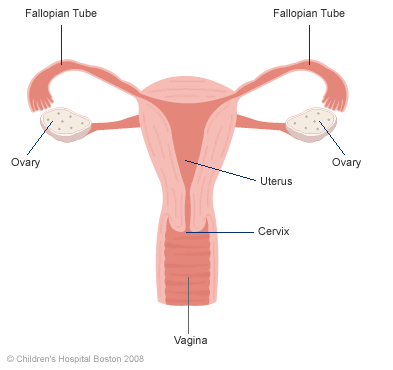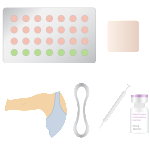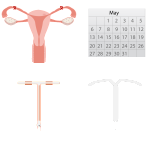Birth Control: All Guides
Birth Control: A Guy’s Guide

If you’re thinking about becoming involved in a sexual relationship, making healthy sexual decisions is extremely important, because they involve your body, your mind, and the well-being of another person. If you do decide to have sex, it’s important to learn about how to protect yourself and your partner from getting an STI, and how to prevent pregnancy if you’re having sex with a female.
There are many different types of birth control (also called contraception). They vary in how well they prevent pregnancy, how much they cost, how easy they are to use, and whether or not they protect against STIs. Birth control options also vary depending on whether they’re used by girls, guys, or both. There are some methods of birth control that are specifically for guys, some that are specifically for girls, and abstinence (not having sex), which anyone can practice.
If you do have sex, you’re at risk for STIs and causing pregnancy. However, if you practice safe sex with only one partner (who isn’t infected and has no other sexual partners) and you make good decisions about birth control, you can greatly lower these risks.
The most effective birth control for males are condoms. Condoms are worn over the penis during sex with a male or female partner. They prevent pregnancy by acting as a barrier, preventing semen from entering the vagina so the sperm can’t reach a female’s egg. Condoms also lessen the chances of getting a sexually transmitted infection (STI) by acting as a barrier, preventing STIs from passing from one partner to another. Using condoms allows guys to have an active part in preventing pregnancy! You can learn more about how to use condoms by reading our condom health guide.
As a young man, you might not be familiar with all of the types of birth control that are available for women. Check out the guides below to learn more about the different birth control options available for males and for females:
Birth Control: Female Barrier Methods
 What does the term “barrier method” mean?
What does the term “barrier method” mean?
A “barrier” is something that blocks or separates; for example, a wall or a fence. The term “female barrier method” of birth control means that there is a barrier (either physical or chemical) that is used to prevent a man’s sperm from reaching a female’s egg and thus preventing pregnancy.
What does the female reproductive system look like?
Take a look at the image below to become familiar with the female reproductive system.

What are the different types of female barrier methods?
There are five types of female barrier methods:
- Spermicides
- Cervical Cap
- Contraceptive Sponge
- Diaphragm
- Internal Condom
How does each method work, and how effective are they at preventing pregnancy?
Each female barrier method has a different efficacy rate towards preventing pregnancy. These rates vary depending on “typical use” (how people usually use it or if it’s not used every time you have sex) vs. “perfect use” (when it’s used perfectly, every time you have sex). Keep in mind that perfect use hardly ever happens.
Spermicides
Spermicides are a chemical barrier method of birth control that come in different forms, such as foams, creams, jellies, suppositories (small oval shaped devices that get placed in the vagina and release a foam), and films (small paper-like tissues that get inserted into the vagina). They work to prevent pregnancy by paralyzing or killing sperm so that the sperm can’t pass through a woman’s cervix and reach her uterus.
| Out of 100 women using spermicides | |
| Typical use: 28 women become pregnant in a year | |
| Perfect use: 18 women become pregnant in a year | |
A cervical cap is a small dome-shaped cup that fits tightly around the base of a woman’s cervix (the opening of the uterus at the top of the vagina). The cap forms a physical barrier to stop sperm from reaching a woman’s uterus. The FemCap is the only brand of cervical cap that is currently available in Europe, Canada, and the United States. Note: Spermicide always needs to be used with the cervical cap.
To understand how effective the cervical cap is, first you need to know that there are two different sets of efficacy rates. One set is called “nulliparous” and another called “parous.” Nulliparous is a medical term that means a woman has never given birth to a baby. Parous is a medical term that means that a woman has given birth to one or more babies.
| Out of 100 nulliparous women using a cervical cap | |
| Typical use: 14 women become pregnant in a year | |
| Perfect use: 9 women become pregnant in a year | |
| Out of 100 parous women using a cervical cap | |
| Typical use: 29 women become pregnant in a year | |
| Perfect use: 26 women become pregnant in a year | |
The contraceptive sponge is a small, doughnut-shaped foam sponge that contains spermicide. It’s placed in a woman’s vagina, and a “dimple” on one side fits over the cervix and stops sperm from reaching the uterus. Once in the vagina, the sponge releases spermicide.
Like the cervical cap, the contraceptive sponge has two different sets of efficacy rates; one for “nulliparous” women and one for “parous” women.
| Out of 100 nulliparous women using a contraceptive sponge | |
| Typical use: 12 women become pregnant in a year | |
| Perfect use: 9 women become pregnant in a year | |
| Out of 100 parous women using a contraceptive sponge | |
| Typical use: 24 women become pregnant in a year | |
| Perfect use: 20 women become pregnant in a year | |
A diaphragm is another small dome-shaped device that fits inside the vagina and covers the cervix. To obtain a diaphragm, a woman will need to be fitted for one by her health care provider, and she will also need a prescription. Note: Spermicide always needs to be used with a diaphragm.
| Out of 100 women using a diaphragm with spermicide | |
| Typical use: 12 women become pregnant in a year | |
| Perfect use: 6 women become pregnant in a year | |
The internal condom is a thin, lubricated sheath (with two ends) that gets placed inside the vagina. One end has a closed ring that lies inside the vagina and covers the cervix, forming a barrier. The other end has a ring which lies outside the vagina. This ring is open, allowing for intercourse. Note: Never use an external condom and an internal condom at the same time.
| Out of 100 women using an internal condom | |
| Typical use: 21 women become pregnant in a year | |
| Perfect use: 5 women become pregnant in a year | |
Do female barrier methods protect against STIs?
For the most part, no. The cervical cap, contraceptive sponge, diaphragm, and spermicide do NOT protect against STIs. The ONLY female barrier method that protects against STIs is the internal condom.
Birth Control: Female Hormonal Methods
 What are hormonal methods of birth control?
What are hormonal methods of birth control?
Hormonal methods of birth control are types of birth control that use hormones (estrogen and/or progestin) to help prevent ovulation. There are many different types of hormonal birth control, and they vary in their effectiveness.
What are the different types of female hormonal methods?
Hormonal (female) contraceptive methods include (list from most effective to effective):
- Hormonal Implants
- Intra-Uterine Devices (IUD)
- Birth Control Pills
- Depo-Provera® Hormonal Injections
- Estrogen/Progestin Hormonal Injections
- Vaginal Hormonal Ring (NuvaRing®)
- Hormone Patch (Ortho-Evra®)
How does each method work, and how effective are they at preventing pregnancy?
Each female hormonal method has a different efficacy rate towards preventing pregnancy. These rates vary depending on “typical use” (how people usually use it or if it’s not used every time you have sex) vs. “perfect use” (when it’s used perfectly, every time you have sex). Keep in mind that perfect use hardly ever happens.
Hormonal Implants:
A hormonal implant is a tiny rod the size of a matchstick that gets inserted under the skin of a woman’s upper arm. The implant releases hormones that prevent pregnancy.
| Out of 100 women using hormonal implants | |
| Typical use: 1 or less women become pregnant | |
| Perfect use: 1 or less women become pregnant | |
Hormonal Intra-Uterine Devices (IUDs)
An IUD is a small device that is placed inside of a female’s uterus. The hormonal IUD releases hormones that prevent pregnancy and can stay in a woman’s body for up to five years.
| Out of 100 women using hormonal IUDs | |
| Typical Use: 1 or Less Women Become Pregnant | |
| Perfect Use: 1 or Less Women Become Pregnant | |
Birth Control Pills
Birth control pills (also called oral contraceptive pills or the “Pill”) are small tablets that a woman takes each day. The pills are made up of hormones (progestin-only or a combination of estrogen and progestin) that work to prevent pregnancy.
| Out of 100 women using combination or progestin-only pills | |
| Typical Use: 9 Women Become Pregnant | |
| Perfect Use: 1 or Less Women Become Pregnant | |
Depo-Provera® is an injection (shot) that a woman is given every 3 months. The shot contains a hormone that works to prevent pregnancy.
| Out of 100 women using Depo-Provera® | |
| Typical Use: 6 Women Become Pregnant | |
| Perfect Use: 1 or Less Women Become Pregnant | |
An estrogen-progestin hormonal injection is a shot than a woman receives once a month. It contains hormones that prevent pregnancy. Note: These injections are not available in the US.
| Out of 100 women using estrogen/progestin injections | |
| Typical Use: 6 or Less Women Become Pregnant | |
| Perfect Use: 1 or Less Women Become Pregnant | |
Hormone Patch (Ortho-Evra®/Xulane®):
The hormone patch looks like a small square Band-Aid® and is worn on the skin; either on the stomach, buttocks, upper back, or upper arm. It contains hormones that get absorbed through the skin and works to prevent pregnancy.
| Out of 100 women using a hormone patch | |
| Typical use: 7 Women Become Pregnant | |
| Perfect use: 1 or Less Women Become Pregnant | |
The vaginal hormonal ring, or “ring” for short, is a small, flexible ring that a woman inserts into her vagina. The ring releases hormones that prevent pregnancy.
| Out of 100 women using a vaginal hormonal ring | |
| Typical use: 9 Women Become Pregnant | |
| Perfect use: 1 or Less Women Become Pregnant | |
Do hormonal methods of birth control protect against STIs?
No. Hormonal methods of birth control do NOT protect against STIs. The only way to protect against STIs is by either using a barrier method (external or internal condom) or practice abstinence (no sexual intercourse).
Birth Control: Other Birth Control Methods for Females
What other types of birth control are available for females?
Here are four additional types of female birth control methods (list from most effective to least effective):
- Abstinence (No sexual intercourse)
- Female Sterilization (Tubal Ligation)
- Copper Intra-Uterine Devices (non-hormonal IUDs)
- Fertility Awareness Based Method (FAB)
- Natural Family Planning
- Lactational Amenorrhea Method (LAM)
How does each method work, and how effective are they at preventing pregnancy?
Each of these methods has a different efficacy rate towards preventing pregnancy. These rates vary depending on “typical use” (how people usually use it or if it’s not used every time you have sex) vs. “perfect use” (when it’s used perfectly, every time you have sex). Keep in mind that perfect use hardly ever happens.
Female Sterilization:
Female sterilization is a permanent method of birth control. There are several different methods of female sterilization, and they all involve minor surgery. All methods either close or cut the fallopian tubes (the tubes that carry the eggs from the ovary to the uterus) so that sperm can’t move through and fertilize an egg. Another option for permanent birth control is male sterilization (vasectomy).
| Out of 100 women using female sterilization | |
| Typical Use: 1 or Fewer Women Become Pregnant | |
| Perfect Use: 1 or Fewer Women Become Pregnant | |
An IUD is a small device that is placed inside of a female’s uterus. The copper IUD does not use hormones. Instead, it has copper wire coiled around the stem and arms of the IUD, which prevents pregnancy. The copper IUD can stay in a woman’s body for up to 10 years.
| Out of 100 women using an IUD | |
| Typical Use: 1 or Less Women Become Pregnant | |
| Perfect Use: 1 or Less Women Become Pregnant | |
FAB methods are a way for a woman to become aware of when she is ovulating so that she can prevent pregnancy. When using this method to prevent pregnancy, sexual partners do not have sexual intercourse during ovulation (the time during a woman’s menstrual cycle when she is most likely to become pregnant). This is the least effective way to prevent pregnancy.
| Out of 100 women using fertility awareness based methods | |
| Typical Use: 24 Women Become Pregnant | |
| Perfect Use: 3 – 5 Women Become Pregnant | |
The LAM method is a temporary method of birth control that a woman can use under the following conditions:
- A woman is ONLY using breastfeeding to feed her baby (at least 6-10 times a day, including night feedings)
- The baby must be less than 6 months old
- She hasn’t had her period since giving birth
Breastfeeding a baby changes how a woman’s body works and prevents the ovaries from releasing an egg. When there is no egg, pregnancy can’t happen.
| Out of 100 women using the Lactational Amenorrhea Method (LAM) | |
| Typical Use: 2 Women Become Pregnant | |
| Perfect Use: 2 Women Become Pregnant | |
Do natural family planning methods of birth control protect against STIs?
No. None of these methods protect against STIs. If you’re sexually active, use a condom every time you have sexual intercourse to protect yourself from getting an STI. Abstinence (not having sex) is the only method that guarantees pregnancy and STI prevention.
 Young Men's Health
Young Men's Health
